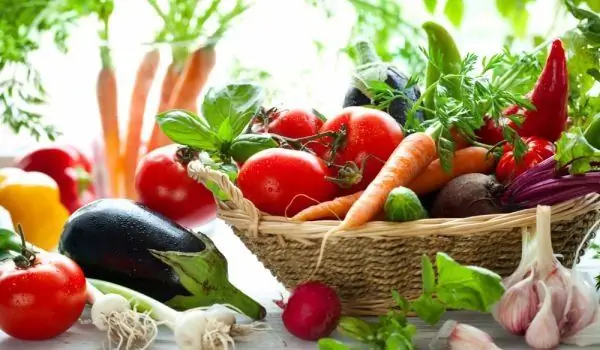2025 Author: Jasmine Walkman | [email protected]. Last modified: 2025-01-23 10:18
Fruits and vegetables did not always look as we know them today.
Although many people today are against their genetic modification, it is good to know that people have been using it for thousands of years.
Before they were grown for food, many of today's fruits and vegetables looked radically different.
Wild versus modern watermelon

Photo: indipendent-co-uk
In the past, watermelon had a much smaller edible part. This is best seen in a 17th-century painting by Giovanni Stanci, in which the red part of the fruit is very small. Today the edible part is much larger and juicy.
Wild versus modern corn

Photo: indipendent-co-uk
North American sweet corn is the most impressive example of selective breeding.
It is grown from the low-edible plant Theosynth. Modern corn is 1,000 times larger than it was in the year 9,000. Wild corn has 1.9% sugar, while modern corn has over 6.6%.
Wild versus modern banana
The first cultivated bananas appeared more than 7,000 years ago in Papua New Guinea. They come from two wild varieties that had large and hard seeds.

Photo: indipendent-co-uk
The cross between them created the modern banana - sweet, easy to peel, seedless and full of nutrients.
Wild versus modern eggplant

Photo: indipendent-co-uk
In the beginning, the aubergines were colored in all colors - white, yellow, green, purple, blue.
Their early version had thorns at the point where the trunk connects to the flower. Selection over the centuries has led to the removal of thorns and the purple color of vegetables we know today.
Wild versus modern carrot

Photo: indipendent-co-uk
Carrot breeding began in the 10th century in Asia Minor and Persia. They were thin purple vegetables with forked roots.
Unlike modern carrots, early carrots were a biennial crop with a strong and characteristic odor. The carrots we know today are much larger, orange and annual.
Recommended:
Eat Red Vegetables And Fruits For Health And Beauty

Recently, the public opinion has prevailed that almost all foods on the market today are harmful. However, this is complete nonsense when it comes to red fruits and vegetables. In addition to being delicious, leading nutritionists recommend that we consume them all year round because of their many health benefits.
The Cleanest And Most Contaminated Fruits And Vegetables

Today we pay more and more attention to the foods we consume. We are interested in their origin and the way they were raised. But can we list the purest and most contaminated fruits and vegetables ? We will help you in this task by revealing unpleasant facts about some of the most beloved and consumed plant foods.
Fresh Fruits And Vegetables Instead Of Isolated Vitamins And Minerals

Over the years, we have learned that the human body is not designed to consume isolated nutrients and use them effectively. We need to take a whole palette of complementary natural nutrients. Lycopene, for example, is a phytonutrient found in tomatoes that is known to prevent prostate cancer.
How To Guess Quality Fruits And Vegetables - Signs And Peculiarities

When you go to the market or to a large supermarket offering fruits and vegetables , you choose which ones to put in your basket. The quality of the dish you will cook with them later depends on your right choice. Every housewife strives for the best products, but often makes mistakes in her judgment and takes those that are on the verge of spoiling or not ripe enough.
For And Against Canned Fruits And Vegetables

What is most consumed during the winter season are pickles, as well as canned fruits and vegetables. There is almost no family that does not make homemade canned tomatoes, pickles, sauerkraut, or compotes of various fruits. The reasons for this are the following - in winter we can not find enough quality fruits and vegetables to eat and rely on canned;

